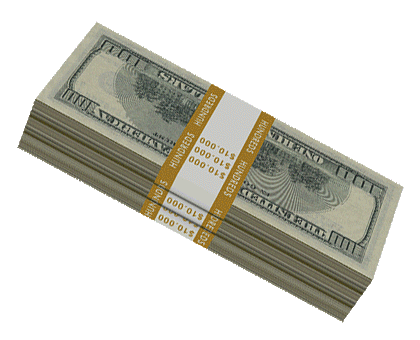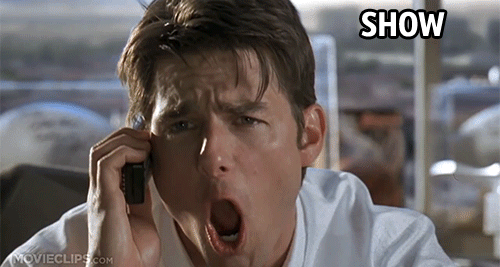
In the three years since student-athletes started getting paid under Name, Image, Likeness (NIL), the entire landscape of college sports has undergone a sea change.
Following years of contentious court battles, the law is now clear that student athletes must be allowed a cut of advertising, merchandise, and other profits made possible due to the popularity of the games they play.
Despite this, those responsible for making the financial model work say it remains a frustrating exercise with opaque rules, too few regulations, and spotty enforcement.
Some players are rumored millionaires, transfer portal rules are bent, and agents consider NIL an all-out money grab.
Why is the NIL landscape so messy?
At Iowa, players receive NIL deals through the Iowa Swarm Collective, headed up by economics and actuarial science alum Brad Heinrichs (BS97). As a fan and former Iowa golfer, he knows the work is critical to Hawkeye sports success. As a businessman, however, he said it’s one of the hardest challenges he’s ever faced.
“I know it’s a cliché to say, but we really are building the plane while flying it.”

There are two ways athletes get paid at Iowa. First is through the Swarm’s 501c3, where every football, men’s basketball, and women’s basketball player receives a stipend in exchange for required appearances and service to nonprofits.
The other avenue available is through the Swarm LLC, in which businesses can contract with individual athletes for appearances, endorsements, or advertisements. Iowa Swarm helps set up the deals, with the goal of making them fair for both athletes and business owners.
Unlike in Heinrichs’ actuarial career, where financial decisions are backed by solid reserves, the NIL landscape forces collectives to make commitments to student athletes without always having the funds in hand. The pressure is relentless, but he is proud to report the Swarm has made good on 100% of its obligations through donations from individuals and endorsement deals.
Nationally, players are rumored to make as much as seven figures. But it’s just that—rumor. Unlike minor league or professional sports, no one is obligated to share actual NIL deal details and players and agents often inflate the reported numbers to drive up offers. Portal negotiations are essentially a game of chicken.
We’d love to tell you actual numbers for what it takes to build an Iowa team, but aside from the fact it’s all unconfirmed and many are under NDAs, disclosing it would put Iowa athletics at a disadvantage. Rival schools would come running to outbid.
Out for blood (and money)
One of Heinrichs’ biggest headaches? Agents.
“I won’t say 100% of them are shady, but somewhere north of 90% don’t cast a shadow in Florida on a sunny day,” he said.

Many agents push for higher pay, leveraging transfer threats to pit schools against one another. And unlike NFL agents, who typically take around 3% of a player’s earnings, college agents often demand a staggering 10-20%. With skin in the game, agents’ decisions often stray into ethical gray areas.
Teams across the country are also regularly courting players during “gray” parts of the calendar.
“The NCAA is supposed to set the rules about when you can contact student-athletes and make offers, but they have very little teeth at this point,” Heinrichs laments. “We have players here constantly telling us they’re being contacted by other schools offering them money during the season.”
In this freewheeling era, it has become such a regular practice that teams that don’t do it risk falling behind.
A plea for financial guidance
Julia Murphy, who has worked for the U.S. Department of Commerce and served on an NCAA Student Athlete Advisory Committee, shares Heinrichs’ concerns, particularly about the lack of protection for these young athletes.
“We have to ask ourselves— are we protecting student athletes?” she said. “We have people flashing bright shiny opportunities at them, without a lot of details. Athletes have so much on their plate already between academics and athletics, and now we are asking them to have business acumen.”
Murphy also worries that NIL is exacerbating inequalities between schools and between male and female athletes. While some programs boast a massive NIL fund, others struggle to keep up, creating an even wider gap between the haves and have-nots. She also sees teammates competing not just for playing time, but for sponsorships, which introduces new tensions into locker rooms.
Murphy emphasized the need for student-athletes to receive financial literacy education.
“What student-athletes need to know is how NIL can benefit them in both the short- and long-term,” she said. “In the best cases, NIL can fill the void for those who can’t work while participating in sports and give them their first steps toward creating a financial future. But we must make sure we are giving them guidance.”
Where Iowa stands

As NIL budgets across the country balloon, Iowa is in a precarious position. In a relatively small state lacking the deep-pocketed donors some programs have—think Oregon with support from Nike founder Phil Knight or Arkansas benefiting from the Walmart owning Walton family—the NIL arms race is a big challenge, Heinrichs said.
In football, Iowa’s fundraising ranks in the middle to upper middle tier of the Big Ten.
Women’s basketball—thanks to Caitlin Clark (BBA24)—is near the top. Men’s basketball, however, is currently in the bottom quartile of the conference.
The ugly truth of it is that ultimately, NIL funding correlates with athletic success.
“A healthy ‘war chest’ in your collective leads to fewer holes in the roster, and that leads to more wins,” Heinrichs said.
What’s next for NIL
He remains optimistic that new models designed to level the playing field could be on the horizon. In a recent conversation with Iowa head football coach Kirk Ferentz, Heinrichs learned the Hawkeye head man favors following the NFL’s lead, with standardized contracts, salary caps, and collective bargaining agreements.
With the Power Five conferences effectively serving as the NFL’s minor league, Heinrichs said a more structured system seems inevitable.
Editor’s note, June 12, 2025: Since this article was published, the long-awaited House v. NCAA settlement was approved, making NIL payments to players permanent—and structured.
Beginning with the fall sports season, the University of Iowa will begin directly paying athletes through its new Flight Funds program, funded primarily through Big 10 media revenue and supplemented by donors. Under the terms of the settlement, these payments must comply with Title IX, meaning Iowa must balance compensation between men’s and women’s sports
Iowa’s Swarm Collective will remain a key fundraising source—but with a more focused mission. Because Swarm operates independently from the university, it can still direct its funds toward football and basketball without jeopardizing Title IX compliance.
The House settlement also includes new oversight rules—like the NIL Go clearinghouse—which are expected to bring much-needed transparency and accountability to the process.
This article appeared as part of a package in the 2025 issue of Exchange magazine about "hot topics" from the worlds of healthcare, tech, higher ed, real estate, and college sports.

More of the Hot Topics series:
911... Is your emergency profitable?
AI's insatiable appetite
An office tower-sized problem
The enrollment cliff
Are pharma mergers evil?
